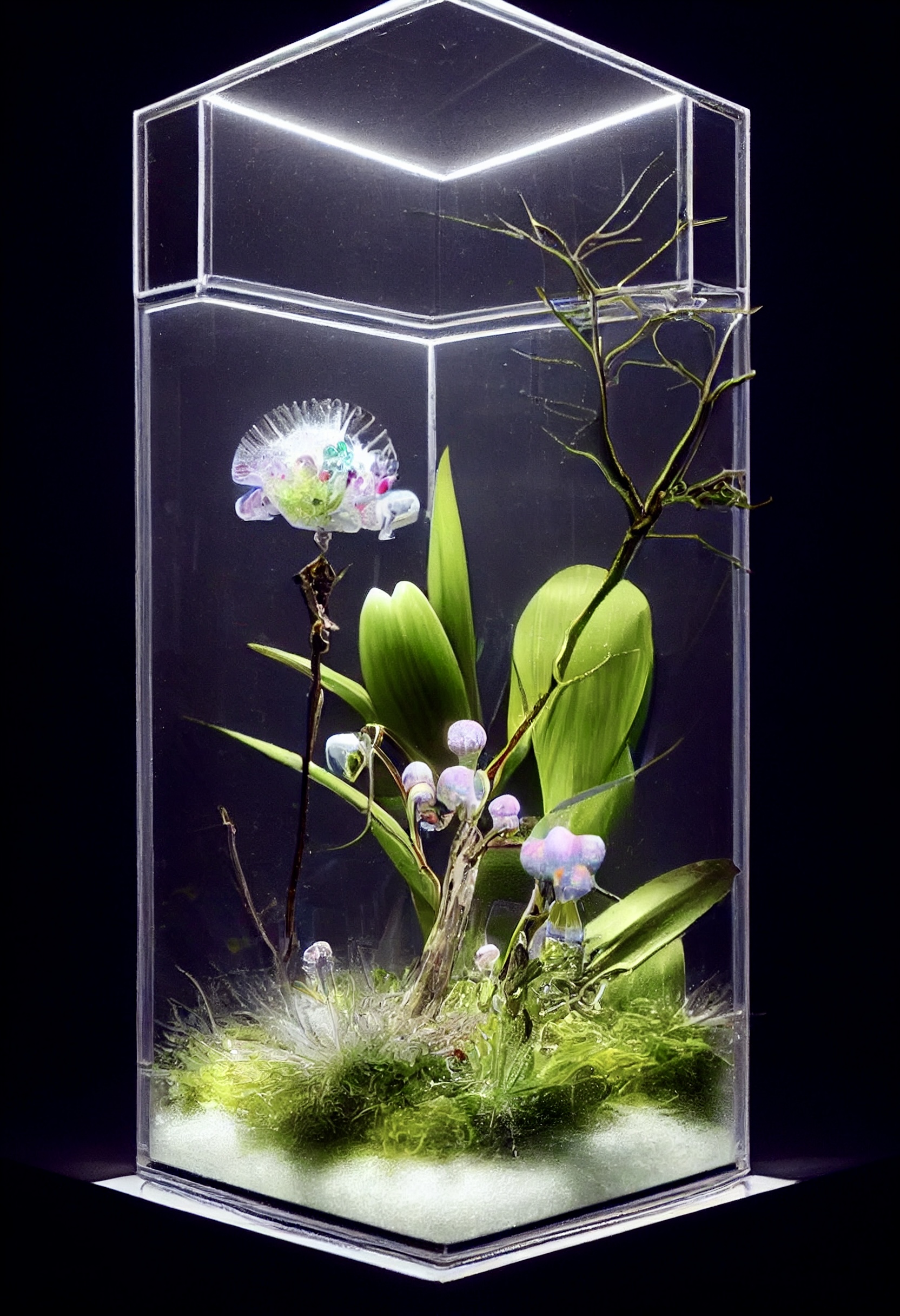GOLDILOCKS BIOSPHERE
A century ago astronomers sought to attribute the seasonal darkening of Mars to the growth of vegetation. They studied the spectrum of light reflected off the surface or signs of green plants. One difficulty with this strategy was evident to H. G. Wells who had imagined a different scenario of Martian plant-life in his science fiction epic The War of the Worlds: “The vegetable kingdom in Mars. Instead of having green for a dominant colour, is of a vivid blood-red tint.”
It turned out to be wrong, but now that we can detect polarised light reflected directly off other worlds, we could spot unmistakable evidence of photosynthesis.
Goldilocks Biosphere is speculative artscience project exploring alien life. Earth has a diversity of photosynthetic organisms besides green plants. Some land plants have red leaves and underwater algae and photosynthetic bacteria come in a rainbow of colours. Purple bacteria soak up solar infrared radiation as well as visible light. Imagine What Plants Would Look Like on Alien Worlds …
The artist is using AI (stable diffusion) as a tool to speculate on alien fauna and flora to predict colours of photosynthesising organisms (such as the plants of Earth) under other suns and with different blankets of atmospheres.
As we explore our galaxy for planets that may host alien life, scientists imagine how different features of a planet would impact the plant life there.Astronomers are in little doubt that a plant-filled planet exists beyond our solar system, even if they aren’t entirely sure what the flora would look like. The universe isn’t short of worlds that could host life. Extrapolating from the 4000 or so exoplanets we have identified so far, NASA researchers recently estimated that there could be around 5 billion habitable planets in our galaxy alone. The challenge is to show that one of them is indeed inhabited. Recent breakthroughs suggest we can finally tease out the portion of reflected light that would betray unambiguous signs of photosynthesis from other worlds.
The idea behind the research is that if you want to find evidence of life in the cosmos you need to know what you are looking for. The researchers have worked out which wavelengths of light would hit the surface of potential life-bearing planets in other solar systems and so worked out what kinds of light-gathering pigments plant-like organisms would need to exploit them. And their results are truly alien, with predictions of purple and yellow-orange vegetation on some other worlds.
The star Sigma Bootis, for example, is much hotter than the sun and produces most of its visible radiation at blue wavelengths. The researchers predict plants on that planet would be yellow or orange. Another star, AD Leo, produces peaks of radiation in the UV spectrum. The team predict that plants on a planet bathed in this high-energy glow would be purple.
But can scientists really predict the properties of hypothetical organisms on planets they can’t observe directly and know almost nothing about? John Raven, a professor of biology at Dundee University said that the work is useful despite the large number of assumptions involved. “While we don’t know about the type of organism, I think solid physics and atmospheric chemistry absorption properties do give some kind of hint as to what colour it will be,” he said.
Article reference: https://www.theguardian.com/science/2007/apr/11/spaceexploration.plants



